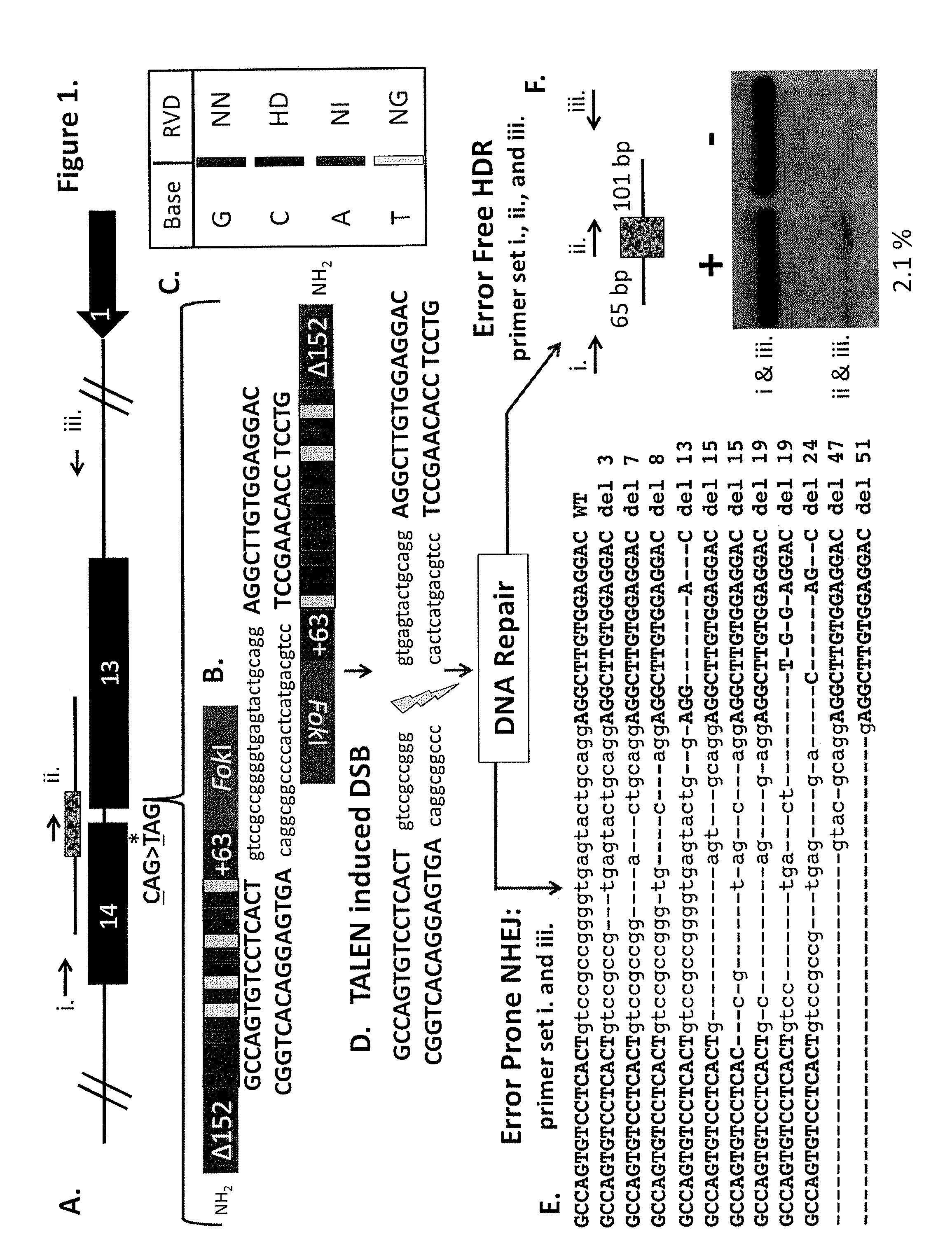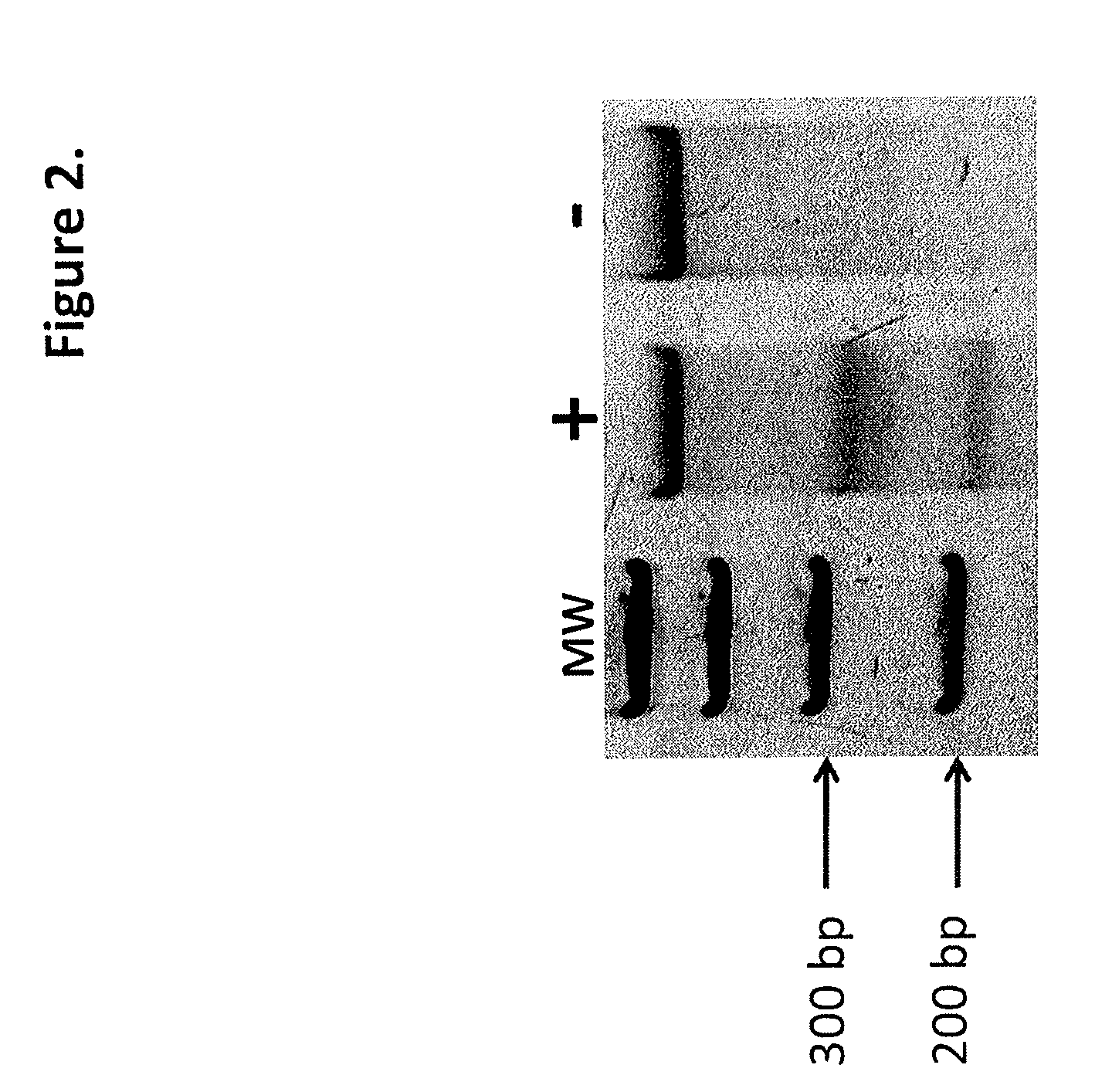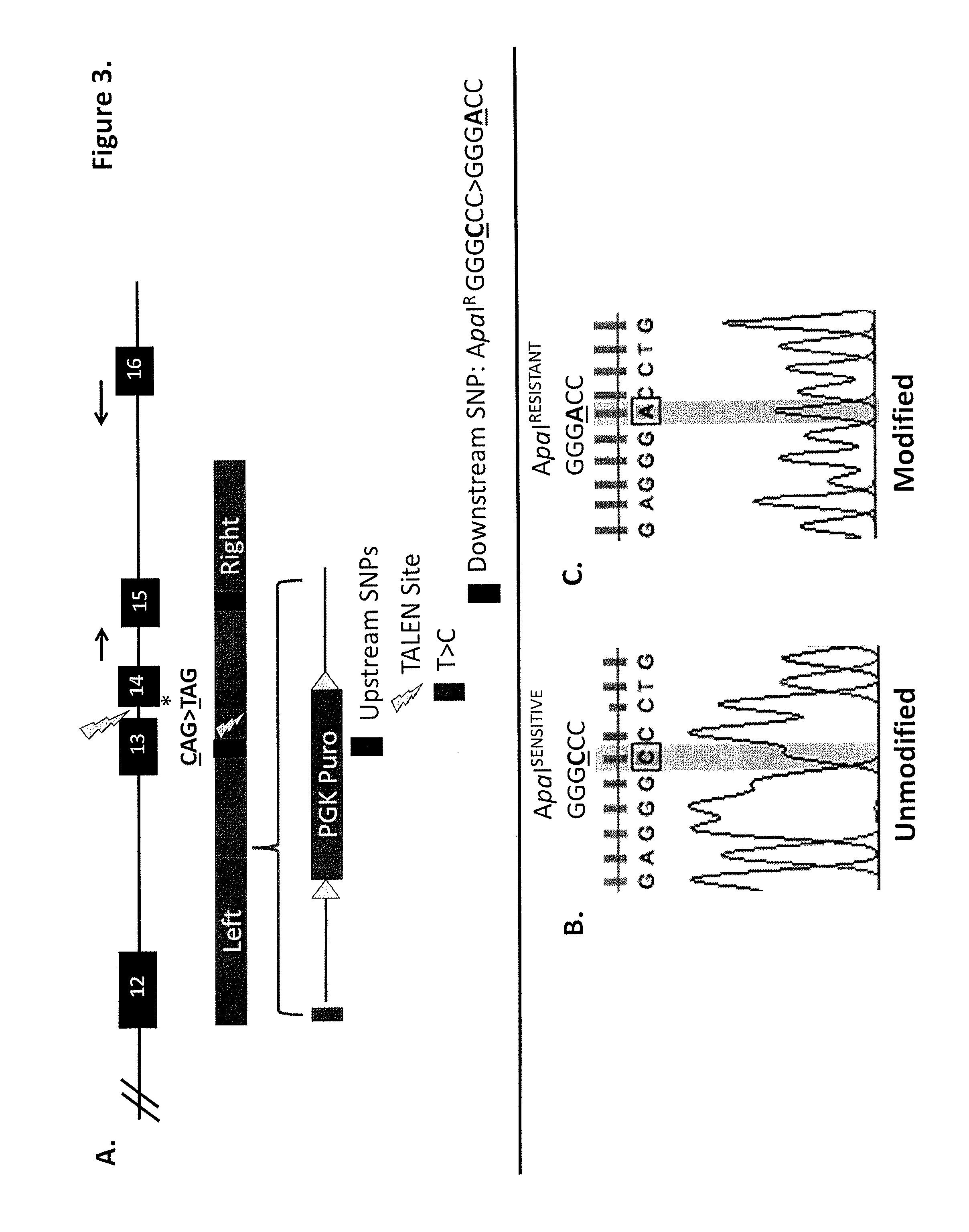TALEN-based gene correction
a gene correction and gene technology, applied in the field oftalen-based gene correction, can solve the problems of severe blistering and skin erosion of rdeb, severe blistering and extensive scarring of the skin associated with rdeb, and rdeb-infected people, and achieve the effect of restoring correct gene expression
- Summary
- Abstract
- Description
- Claims
- Application Information
AI Technical Summary
Benefits of technology
Problems solved by technology
Method used
Image
Examples
example 1
Materials and Methods
Research Subject and Cell Line Derivation.
[0105]After obtaining informed parental consent we obtained a punch biopsy from the skin of a male RDEB patient with a homozygous c.1837 C>T premature termination codon mutation. Approval for research on human subjects was obtained from the University of Minnesota Institutional Review Board. A primary fibroblast cell line was derived and maintained in low oxygen concentration conditions.
TALEN and Donor Construction.
[0106]The TALEN candidate described in FIG. 1A was generated via the Golden Gate Assembly method and inserted into a homodimeric form of a CAGGs promoter driven FokI endonuclease as described [1, 2]. The left donor arm was amplified with the LAF and LAR primers shown in Table 1. The right arm was synthesized in two fragments (inner and outer) using an overlapping oligonucleotide assembly strategy as described [3, 4]. All primer sets are shown in Table 1; the left and right arms were cloned into a floxed PGK pu...
example 2
[0126]An example of a Donor Plasmid Sequence is set forth in SEQ ID NO: 22. An example of the Left Arm of the Donor Sequence is set forth in SEQ ID NO:31. An example of the Loxp site of Donor is set forth in SEQ ID NO:23. An example of the PGK Promoter of Donor is set forth in SEQ ID NO:24. An example of the Puromycin Gene of the Donor sequence is set forth in SEQ ID NO:25. An example of the Bovine Growth Hormone polyadenylation signal of Donor is set forth in SEQ ID NO:26. An example of the Loxp Site Of Donor is set forth in SEQ ID NO:27. An example of the Right Arm of Donor is set forth in SEQ ID NO:28. An example of TALEN Left (pTAL 286) is set forth in SEQ ID NO:29. An example of TALEN Right (pTAL 287) is set forth in SEQ ID NO:30.
PUM
| Property | Measurement | Unit |
|---|---|---|
| expression time | aaaaa | aaaaa |
| density | aaaaa | aaaaa |
| volume | aaaaa | aaaaa |
Abstract
Description
Claims
Application Information
 Login to View More
Login to View More - R&D
- Intellectual Property
- Life Sciences
- Materials
- Tech Scout
- Unparalleled Data Quality
- Higher Quality Content
- 60% Fewer Hallucinations
Browse by: Latest US Patents, China's latest patents, Technical Efficacy Thesaurus, Application Domain, Technology Topic, Popular Technical Reports.
© 2025 PatSnap. All rights reserved.Legal|Privacy policy|Modern Slavery Act Transparency Statement|Sitemap|About US| Contact US: help@patsnap.com



